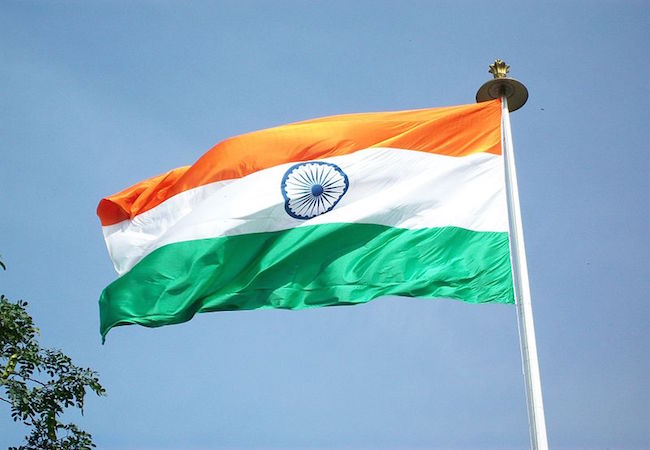
By Nauman Hassan
With lucrative objective of global peaceful proliferation, the Nuclear Supplier Group (NSG) was created in 1975 to make sure the peaceful transfer of nuclear technology and to cut the threat of misuse. The 48-states club established in the response of India’s first nuclear explosion in 1974 with the ultimate aim the limit the spread of nuclear weapons. Over the time, the association experiences some discrepancies which ultimately effected its charm. Brazil and France secure membership without signing Non-Proliferation Treaty (NPT), the core clause of NSG, and provided room for other proliferators to become a part of NSG. Whether it’s according to the norms of NSG or not, the New Delhi approached Washington for diplomatic support in favor of India’s membership of NSG without signing NPT. Obama administration influenced its ally states to vote in the favor of India’s membership remain unsuccessful as of particularly China Turkey and Azerbaijan factors.
Beside deliberate and impressive support of White House, the core hurdle to New Delhi is to fulfill criteria-based approach. The essentials of proposed criteria clearly restricting India to join the sphere of nuclear technology control organization to enjoy the nuclear technology transfer. In view of that the main elements are the signatory of Non-Proliferation Treaty (NPT), clear description of current and future intentions and strict implementation of IAEA safeguards. In case of India, the non-signatory has issued revised form of its fourteen point agenda but the existing wavier by US making it a complex situation particularly on the issue of Indian insurance about its commitments and standings. As a case of implementation of IAEA safeguards, India committed to put 14 out of its existing 22 nuclear power plants under safeguards and for civilian purposes but still the safeguarded 14 plants are under debate of commitments and standing as the reactors still waiting to work in legal way as they descripted. Additionally, the reprocessing stations are under IAEA observations but with a clause that they will be supervised while processing imported material and when it will come to domestic reprocessing, IAEA will get a side. Logically, how the NSG, US and Japan will guarantee the dangerous nuclear program and its commitments in the near future and beyond.
The debate become more critical after the Grossi’s December 6 draft that proposed more idealistic 9 points. As the first four points focused at clear and strict separation of all nuclear facilities between civilian and non-civilian programs and IAEA safeguards implementation. The proposed point for non-NPT members already got enough critic in international community particularly in the case of India; possessing one of the unsafeguarded nuclear program in the world. Its designated 14 nuclear facilities as for civilian use and under IAEA safeguards are still under debate as not under controls and safeguards. The issue also questioning the exemptions availed under Indo-US civil nuclear deal on 2007. More significantly, the origin of Indian nuclear technology used in its 1974 test was US and Canada and it was assured to the suppliers that the technology will be used to civilian purposes but the consequences was the clear misuse. Even though the IAEA provides and maintain the separate identification yet the future intentions can’t be assured.
By considering the Additional Protocol of IAEA that will identify civilian nuclear facilities with clear safeguards agreement to ensure that the safeguarded material will be used only for peaceful purposes sounds as not to be implemented on the reprocessing units in the case of reprocessing domestic material that is making the scenario more complicated as to supervise whether the reprocessed material is domestic or either imported under NSG umbrella. The situation is complexed particularly as New Delhi lacking to separate its reprocessing facilities as civilian and non-civilian. The issue get more intensification through Grocci’s next proposed point to indicate commitment of not to use transferred radio-active material from NSG Participating States in unsafe-guarded facilities.
The author is also in the favor of proposed no more nuclear test if a state want to reap the benefits of NSG membership. In that regard, any nuclear weapon state that is committed to not to go for another nuclear test should not hesitate to sign Comprehensive Test Ban Treaty (CTBT). Aside the proposal by Islamabad for mutual test ban treaty, New Delhi has not shown willingness for any such initiative. Not only this, India is working to develop second strike capability through nuclear submarine that obviously need a test to ensure credibility. Again, it will be uncertain that India will go for such option and even it signs yet the intentions, plans and policies of New Delhi will not be clear.
Finally, the author’s deliberate support for non-proliferation, disarmament and merit-based formula to join the club for non-NPT members is expected to focus at the expanded role of peaceful nuclear technology. Nonetheless, the formula doesn’t seems entirely in line with the lucrative goals of global non-proliferation. To facilitate nuclear weapon NSG applicants, creating room for exemption and waivers, ignoring the global peace initiatives alike; NPT and CTBT and proposing weakening formula will expand the sphere of mistrust and anarchy that will defiantly destabilize the South Asian strategic landscape. In net shall, proposing merit-based and not criteria-based could lead towards proliferation.




